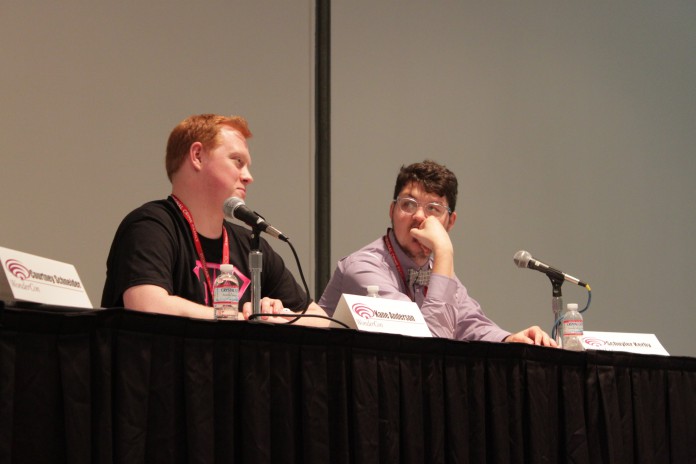Victoria Hungerford
Web Editor
Photo By: Victoria Hungerford
University of California, Santa Barbara Ph.D. candidate Kane Anderson sat on panel at Gender: Queer Spaces at WonderCon 2011. Anderson’s dissertation discusses how gay super-hero costume parties challenge mainstream ideology and masculinity. In his work, Anderson looks at the reappropriation of mainstream fantasy to create a queer space and a queer perspective.
The panel was compromised of second-year undergraduate from the School of Art Institute of Chicago Courtney Shneider, graduate student from the University of Central Florida Schulyer Kerby and Kane Anderson, Ph.D. Candidate from UCSB. These three individuals presented their research that briefly reflected the over arching theme of the panel-Gender and Queer Spaces. Schneider discussed the mainstreaming of queer relationships in graphic novels, and Kerby discussed queer spaces in Neil Gaimen’s The Doll’s House.
As a Ph.D. candidate under the Theater Department, Anderson’s discussion was not merely a sit-down panel-he performed his dissertation. It featured an academic discussion on the gay super-hero costumes, particularly paying close attention to gay male performance in these spaces. At one point during the presentation, he ripped off his suit to show his “Super-Gay” t-shirt, a spoof on the classic iconography of Superman.
The open discussion between fans and scholars as communities in the larger subculture of comic book “fandom” created a unique setting at this year’s WonderCon.
“I love being at this place [WonderCon]. It’s a unique environment where scholars and fans can engage in an open dialogue,” said Anderson about the experience presenting at WonderCon 2011.
During Anderson’s panel, he argued that due to the performance nature of Super-hero costumes, the super-heroes could be participating in a performance of drag and that all comics could be read as a queer space. He believes that super-heroes do not hold up to the mainstream constructions of masculinity in that mainstream male super-heroes are either presented as asexually or hyper-sexualized. To Anderson, embracing the performance of wearing skin-tight super-hero clothing at gay super-hero costume parties is an embodiment of a male queer dialogue with mainstream constructions of masculinity.
Anderson’s research hasn’t always been met with praise from fellow scholars.
“I study pop culture, which isn’t always looked upon as a topic of interest [from academia],” Anderson said about his research.












Comments are closed.